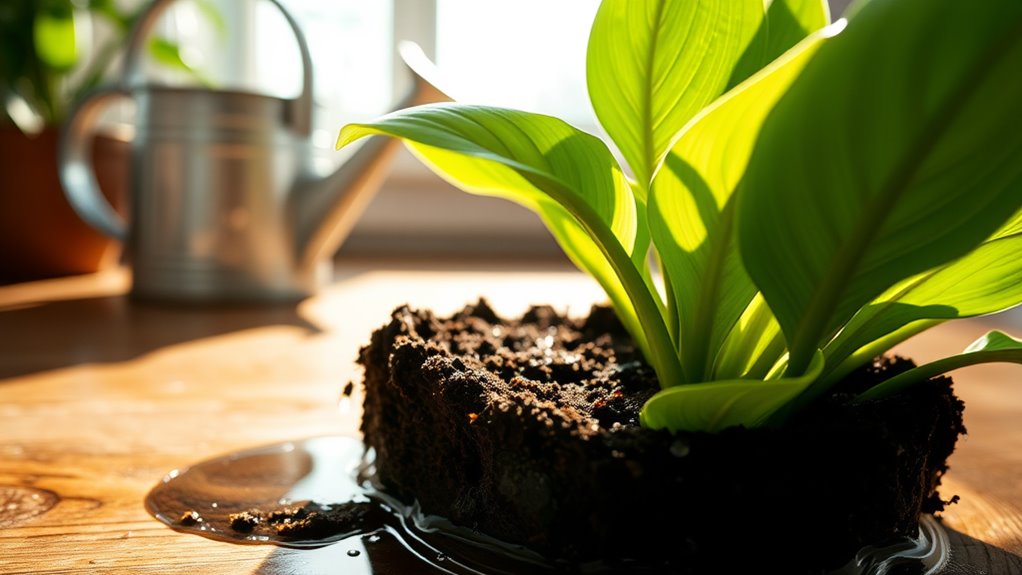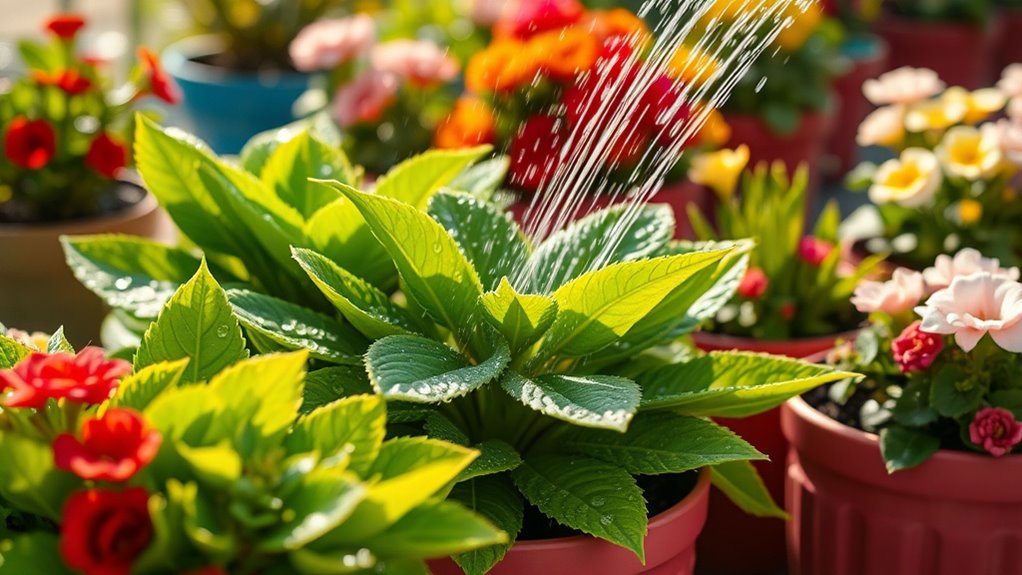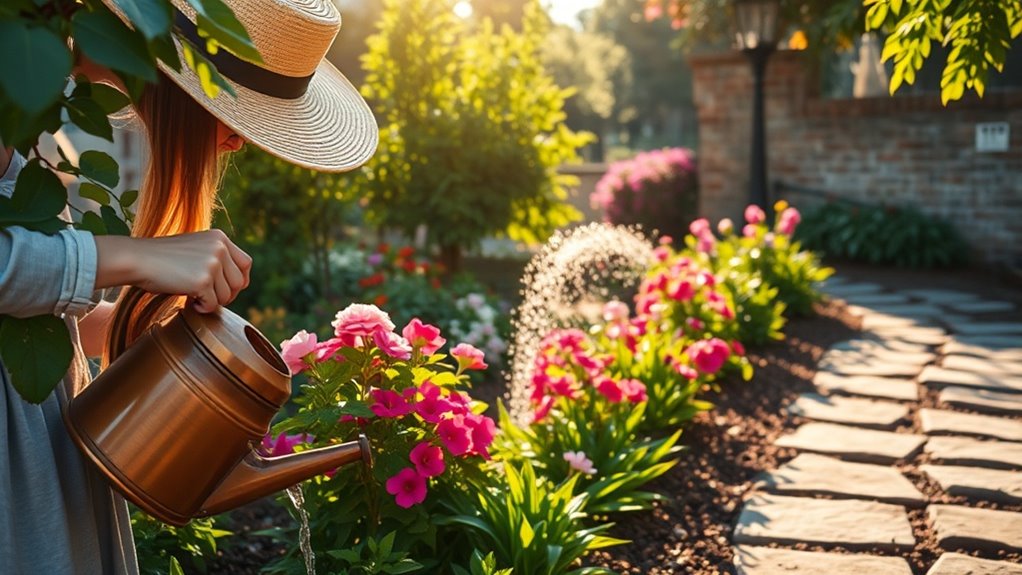The Watering Mistake I Didn’t Know I Was Making
Have you ever wondered if you’re watering your plants correctly? Many people, like you, often confuse yellowing leaves for signs of thirst, leading them to overwater their beloved greenery. The truth is, this common mistake can create a damp environment that fosters root rot. Understanding the unique watering needs of each plant is essential. But what factors should you consider to ensure your plants thrive? Let’s explore this crucial aspect of plant care.
Identifying Overwatering and Underwatering Issues
When it comes to plant care, identifying whether you’re overwatering or underwatering can be tricky, but it’s crucial for your plants’ health.
Pay attention to your plants’ needs as seasons change; seasonal watering varies significantly.
Check for yellowing leaves or wilting to detect issues. One common sign of overwatering plants is the development of root rot, which can be detrimental to plant health.
Adjust your watering routine accordingly to ensure your plants thrive and avoid stress, promoting healthy growth year-round.
The Importance of Soil Moisture Levels
Soil moisture levels play a vital role in plant health and growth. Understanding these levels helps you support your plants effectively. Use the table below to evaluate moisture:
| Moisture Level | Plant Response | Action Needed |
|---|---|---|
| Too Dry | Wilting, Stunted | Water immediately |
| Ideal | Strong, Healthy | Maintain moisture |
| Too Wet | Root Rot, Yellowing | Reduce watering |
Monitoring moisture ensures thriving plants. Additionally, keeping an eye on ideal watering schedules can also significantly improve your garden’s health.
Choosing the Right Time of Day to Water
Choosing the right time of day to water your plants can significantly impact their health and growth.
Early morning is ideal, as cooler temperatures reduce evaporation, allowing water to penetrate deeply into the soil.
Avoid watering during the heat of midday, since excessive evaporation can lead to wasted water.
Evening watering may promote disease as moisture lingers overnight, so it’s best to stick to mornings. Additionally, watering in the morning allows for optimized plant growth as plants can absorb nutrients more effectively during daylight.
Understanding Plant-Specific Watering Needs
While each plant species has its own unique watering requirements, understanding these specifics is key to fostering a thriving garden.
For instance, succulents prefer infrequent watering, whereas ferns thrive in consistently moist soil.
Know your plants’ needs based on their origins and growth habits.
Research and adjust your watering routine to ensure each plant receives the right amount of water for optimal health.
Additionally, be mindful that overwatering can lead to root rot, which significantly harms plant vitality.
Seasonal Adjustments for Optimal Hydration
As seasons change, adapting your watering routine becomes essential to meeting your plants’ varying hydration needs.
In spring and summer, increase watering frequency as temperatures rise and plants grow actively. Conversely, scale back in fall and winter when growth slows and evaporation decreases.
Monitor soil moisture regularly to prevent overwatering or underwatering, ensuring your plants thrive year-round. Additionally, implementing water-saving tips can enhance your garden’s resilience amid fluctuating weather conditions.





